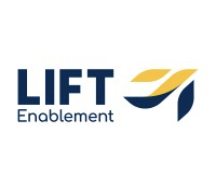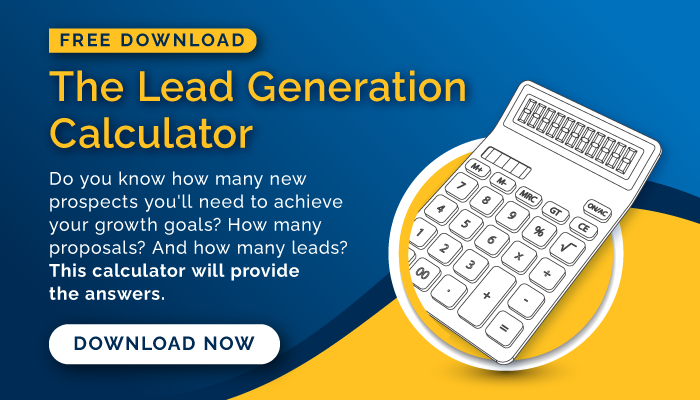 Companies are working harder than ever to increase sales—only to see a plummeting payoff. People used to say that technology was going to replace sales reps, but this prediction hasn’t come true. On the contrary, all companies—even those with massive tech stacks—are hiring more salespeople than ever before.
Companies are working harder than ever to increase sales—only to see a plummeting payoff. People used to say that technology was going to replace sales reps, but this prediction hasn’t come true. On the contrary, all companies—even those with massive tech stacks—are hiring more salespeople than ever before.
Despite all these tech investments, employees are working harder, doing more, spending more, and taking more risks. Clearly, something isn’t working.
The hard truth is this: the largest tech stack and the biggest salesforce won’t help you if you’ve lost sight of sales fundamentals.
As we’ve said before and will say again, a good, high-quality sale is the byproduct of a series of high-quality decisions. The job of a modern salesperson is to facilitate mutually high-quality decisions.
If sales reps can help people make better decisions, sales will take care of themselves. To do that, salespeople need an efficient, easy-to-use method to get the right signals to manage decision processes.
That’s where RevOps, with its focus on alignment and process, can play a valuable role. A collaboration between sales and RevOps can jumpstart velocity and momentum by ensuring the right information gets to the right people.
The Roles of RevOps and Sales Performance
To better understand how RevOps and Sales Performance should work together, let’s ensure we’re using the same definitions.
RevOps is a strategic business function that bridges sales, marketing, and customer success to boost revenue growth. To do this, it aligns all the people, processes, systems, and data that control or contribute to how your business generates revenue.
Sales Performance is the effectiveness and efficiency with which a sales team sells in order to meet revenue and sales targets. People often think of sales performance as focusing on production—but it should actually focus on production capacity.
If you remember the story of the goose and the golden egg, a farmer discovered he owned a goose that laid a single golden egg every day. While the farmer was overjoyed at first, he soon became greedy. Impatient that he was only getting one golden egg per day, he decided to kill the goose and cut her open to get all the eggs—but of course, he found no eggs. Meanwhile, he’d destroyed his means of production.
Sales performance focuses on the gold egg—in this case, production—instead of the goose, otherwise known as production capacity.
RevOps can help increase production capacity by giving reps access to the signals they need.
But before we get into the solution, let’s outline why having these signals is more important than ever.
Why Buyers and Sellers Are Struggling
Not that long ago, a strong salesperson could get directly in touch with the final decision-maker. If the rep was skilled enough to influence that decision-maker well enough, they could close the sale. Simple, right?
Unfortunately, that type of sale now teeters on the brink of extinction. In just the past decade, the sales process has changed significantly. Both buyers and sellers have changed their behavior, but they’re failing to connect.
Buyers have become:
- Risk-avoidant. Surprisingly, success isn’t their primary motivator. Buyers don’t want to make a mistake—especially if they are ultimately responsible if the purchase is a failure. In other words, buyers are not necessarily trying to make the best decisions; they’re trying to avoid bad decisions.
- Overwhelmed by information. Since buyers are doing their own research, they are often paralyzed by the sheer amount of information, much of it conflicting. They wonder how they can sort through all it and what they can trust—especially since they fear making a mistake.
- Indecisive and fearful. Today’s decisions are more complex and nuanced than they were in the past. Buyers don’t have the necessary knowledge or tools to feel confident about making a big, expensive decision.
Meanwhile, sellers are also struggling with the sales process. They are:
- Under significant performance pressure. Sales reps are being pressured to meet quota, even as they find themselves working harder for less return.
- Scattered. Salespeople need better data to help classify deal quality. Due to a lack of accurate data, reps can’t prioritize the deals that offer the best advancement opportunities. As a result, reps tend to spread their time across opportunities too broadly. Since they aren’t clear where more effort would make a difference, they waste too much time on lower-quality opportunities or opportunities that they would have likely won anyway.
- Overwhelmed. According to a HubSpot report, 45% of salespeople are overwhelmed by the number of tools in their tech stack. More than a quarter of respondents believed reducing their tech stack would make them more efficient and would result in higher-quality data—so they could spend more time selling.
Here’s even more proof the sales process is broken:
- Over 40% of sales opportunities end with no decision.
- Buyers complete most of their research online before even speaking to a seller. As a result, sellers are less present at critical points along the buying journey—especially the crucial consideration phase, where problems are framed and defined. In fact, only 11% of reps help customers with problem identification, despite the fact that The Challenger Sale outlined it as a proven method of sales success.
- While buyers think the information they find online while doing their own research is trustworthy, they also find it overwhelming and contradictory.
- Sales involve more people. The single decision-maker has faded away; more people than ever are involved in the decision-making process. Buyers are increasingly making decisions via consensus.
The result? Customers are struggling to buy. In order to improve sales performance, sales reps need to be equipped to help customers, who are struggling to sort through conflicting information online, make good decisions.
One way to do this is help your salespeople become what Gartner’s Brent Adamson calls "Sense Making reps." These salespeople help prospects evaluate information by prioritizing sources, quantifying trade-offs and reconciling conflicting information; this helps customers reach their own understanding of the best solution. Adamson says that 80% of the sellers who used the Sense Making approach “closed high-quality, low-regret deals."
To do this successfully, reps need a way to conveniently access and use good data.
How RevOps Can Support Sales Performance
There’s a lot RevOps can do to bolster sales performance. However, if I had to boil it down to the most important thing, it would be configuring the CRM so reps can more easily identify important signals. This would allow sales reps to prioritize strong opportunities and get in earlier, playing an important role in the buyer’s decision-making process.
4 Signals Every CRM Should Support
- Quality - Good data is key because sales reps are already overwhelmed by the amount of data. If reps aren’t clear what information is accurate, it takes them a lot more time to make a move. And by the time they’ve battled that data, it may already be outdated.
In addition, salespeople are more likely to fall out of compliance if the data they’re using isn’t worthwhile—and that perpetuates the whole cycle all over again. RevOps can help design—or redesign—the CRM so that it supports the business process, which will increase utilization. That, in turn, will create better data and improve usage.
- Fit - More accurate data allows reps to start the sales process with prospects who seem like good fits. Customer profiling allows reps to take an active, targeted approach to customer acquisition. In the Discover phase of the DEALS Framework, sales reps are looking for a good fit. Ruling out a prospect at this stage allows salespeople to spend more time on the customers who are likely to buy.
- Actions - Can sales reps identify meaningful actions? These actions, as outlined in this blog, will differ for every company. When a meaningful action occurs, the salesperson gets a signal that the contact is no longer in a passive mode but is actively searching for solutions. It also signals that the prospect has a conscious, active awareness of your business and/or your offering. This information empowers sales reps by giving them the ability to personalize, contextualize, and customize their next steps with that prospect.
- Resources - Once salespeople have a sense of the problems prospects face, you can begin to tailor resources to their particular needs. That includes creating resources if a gap exists. For example, if high-value prospects struggle with a similar issue, it’s a signal to create resources to help sales reps reframe that problem. That will shorten the sales cycle and ease the load on each individual salesperson, helping them become more effective with less effort.
If RevOps can roll up its sleeves and help sales reps with these four signals, sales performance will be able to focus on scaling sales production. Salespeople and sales managers will be able to tailor their sales and marketing efforts to the most likely prospects, increasing the chances of consistently closing deals.

 Lift Enablement
Lift Enablement
